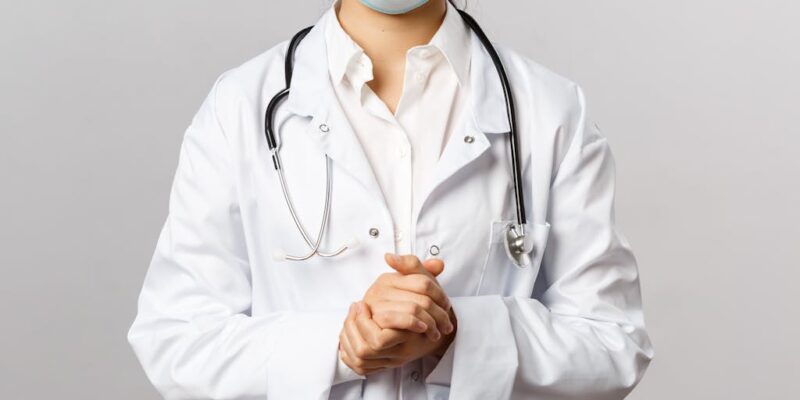Lung cancer is more than just a disease of the lungs—it affects your entire lifestyle, including your diet. The foods you eat play a crucial role in both the prevention and management of lung cancer. Certain foods can be particularly harmful to those at risk or already diagnosed. This guide outlines the foods to avoid and provides essential information on lung cancer symptoms, stages, and treatment strategies.
The Worst Foods for Lung Cancer Patients:
- Processed Meats: Bacon, sausages, and deli meats are high in nitrates and preservatives, which have been linked to an increased risk of cancer. These additives can create carcinogenic compounds in the body, worsening cancer risks.
- Fried Foods: Foods like fried chicken, french fries, and other deep-fried items contain unhealthy fats and acrylamides. These substances are formed during the frying process and have been associated with cancer development.
- Sugary Drinks: Beverages such as sodas, energy drinks, and other sweetened drinks contribute to obesity, a known risk factor for cancer, and can lead to insulin spikes, potentially promoting cancer cell growth.
- Refined Carbohydrates: White bread, pastries, and other foods high in refined carbs can cause blood sugar levels to spike, fueling cancer cells and contributing to poor overall health.
- Alcohol: Regular alcohol consumption has been linked to an increased risk of various cancers, including lung cancer. Alcohol can also weaken the immune system, making it harder for the body to fight cancer.
- Red Meat: Frequent consumption of red meat, especially when cooked at high temperatures, can lead to the formation of harmful carcinogens like heterocyclic amines (HCAs) and polycyclic aromatic hydrocarbons (PAHs).
- Dairy Products: While evidence is not yet conclusive, some studies suggest that high intake of dairy products may increase the risk of lung cancer, possibly due to hormones or other growth factors present in milk.
Understanding Lung Cancer
Lung cancer begins in the lungs but can spread to other parts of the body. It primarily affects the bronchi, bronchioles, and alveoli within the lungs. The lungs are protected by a thin lining called the pleura, and beneath them lies the diaphragm, a key muscle involved in breathing. Lung cancer is often caused by smoking, but other risk factors include exposure to radon, a naturally occurring radioactive gas, and harmful substances like cadmium, arsenic, and certain petroleum products.
Key Risk Factors:
- Family history of lung cancer
- Previous radiation therapy to the chest
- A past diagnosis of lung cancer
Recognizing Lung Cancer Symptoms
Lung cancer symptoms can often be confused with those of other respiratory diseases, making early detection challenging. Symptoms vary depending on the type of lung cancer, which can be broadly categorized into Non-Small Cell Lung Cancer (NSCLC) and Small Cell Lung Cancer (SCLC).
Non-Small Cell Lung Cancer Symptoms:
- Persistent chest pain
- Coughing that doesn’t go away or produces blood
- Shortness of breath and fatigue
- Frequent respiratory infections
- Hoarseness and wheezing
- Bone pain in advanced stages
Small Cell Lung Cancer Symptoms:
- Persistent coughs
- Chest pain that worsens with coughing, deep breaths, or laughing
- Blood or rust-colored phlegm
- Unexplained weight loss and appetite loss
- Shortness of breath and fatigue
Advanced Symptoms for Both Types:
- Lumps near the skin due to spread to lymph nodes
- Neurological changes like headaches or seizures from brain metastasis
- Paraneoplastic syndromes, causing symptoms like blood clots or excessive bone growth
Stages and Types of Lung Cancer
Lung cancer is categorized into two main types: Non-Small Cell Lung Cancer (NSCLC) and Small Cell Lung Cancer (SCLC). NSCLC is more common, accounting for 80-85% of cases, while SCLC is less common but tends to spread more quickly.
Stages of Non-Small Cell Lung Cancer:
- Stage 1: Cancer is confined to the lungs.
- Stage 2: Cancer has spread to nearby lymph nodes.
- Stage 3: Cancer has spread to lymph nodes in the chest.
- Stage 4: Cancer has spread to other parts of the body.
Stages of Small Cell Lung Cancer:
- Limited Stage: Cancer is limited to one lung or nearby lymph nodes.
- Extensive Stage: Cancer has spread to the other lung, distant organs, or bone marrow.
Preventive Measures and Treatment Options
While there is no sure way to prevent lung cancer, certain lifestyle changes can reduce your risk:
- Avoid smoking and exposure to secondhand smoke.
- Test your home for radon.
- Limit exposure to known carcinogens.
- Maintain a healthy diet rich in fruits and vegetables.
- Exercise regularly.
If diagnosed, lung cancer treatment options depend on the type and stage of the disease. These may include surgery, radiation therapy, chemotherapy, immunotherapy, and targeted therapy. Discussing your options with a specialized medical team is crucial for effective treatment planning.
Conclusion
Lung cancer is a challenging disease that requires careful management, including dietary choices. Avoiding certain foods can play a role in improving outcomes and supporting overall health. Understanding the symptoms, stages, and treatment options for lung cancer is vital for those at risk or already diagnosed. Always consult with your healthcare provider for personalized advice and treatment strategies.



















Comments